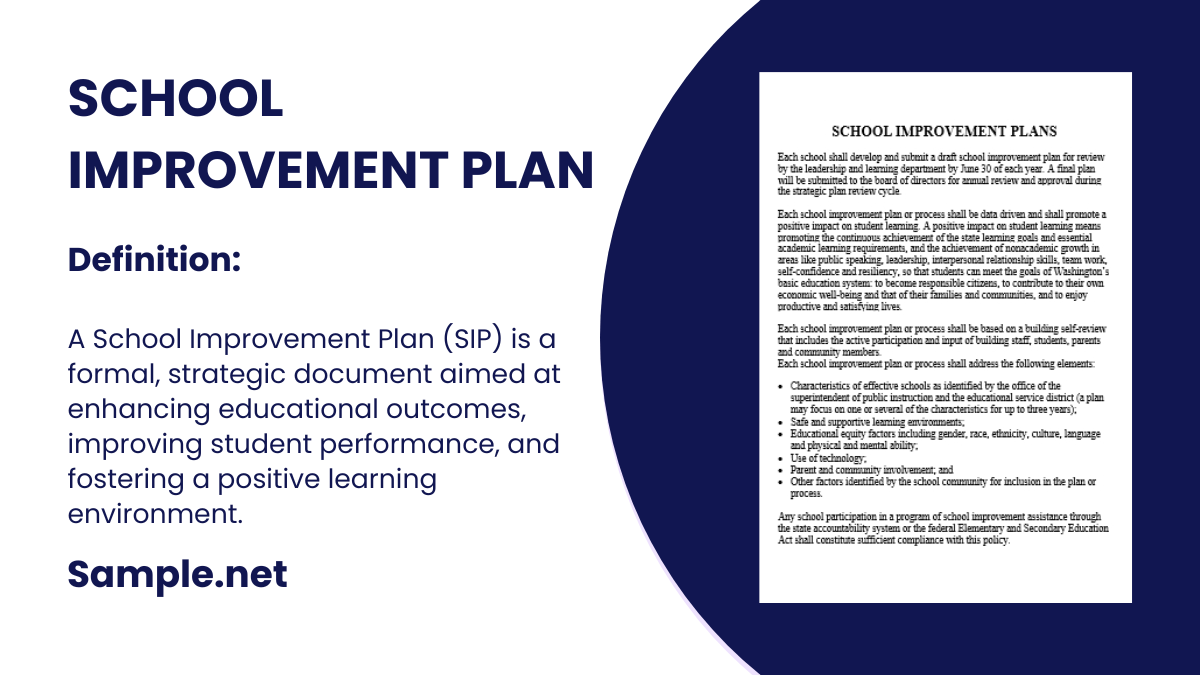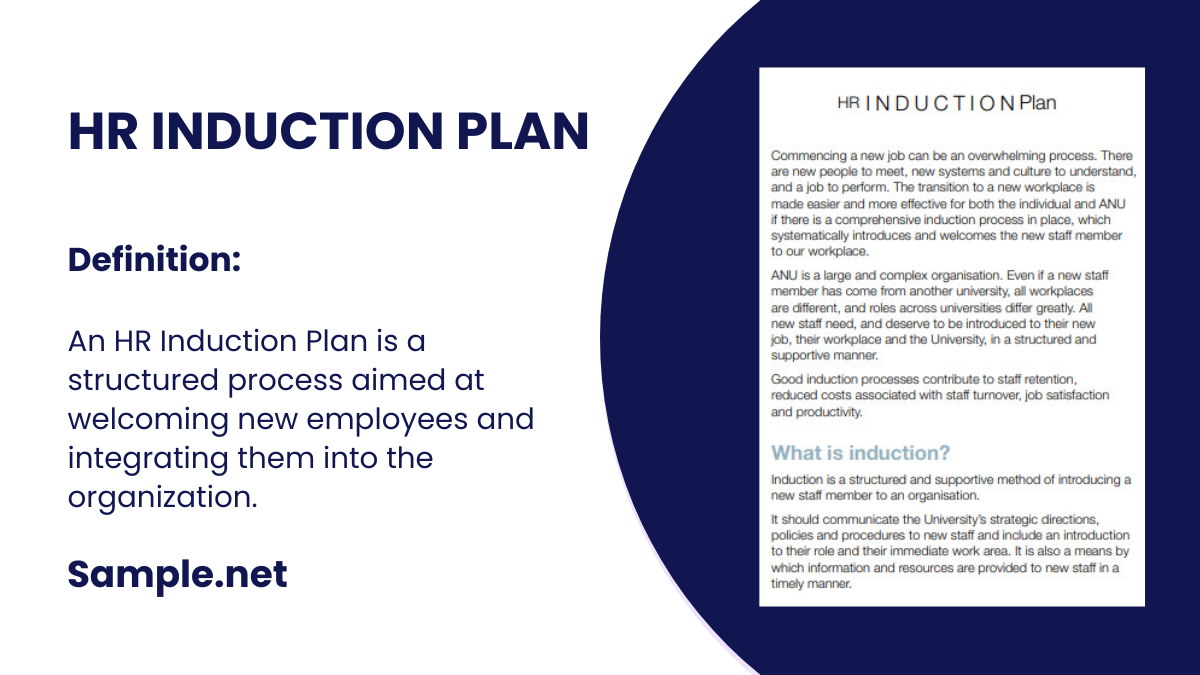A School Improvement Plan is a strategic blueprint aimed at enhancing educational outcomes for students. It outlines clear goals, targeted actions, and measurable benchmarks to ensure continuous development in…
continue reading
10+ Sample Coaching Development Plan
-
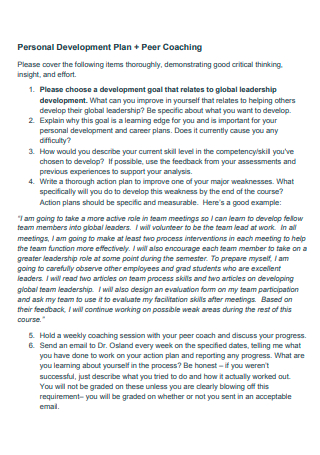
Coaching Personal Development Plan
download now -
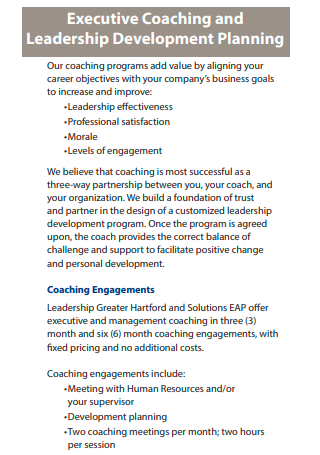
Executive Coaching and Leadership Development Planning
download now -
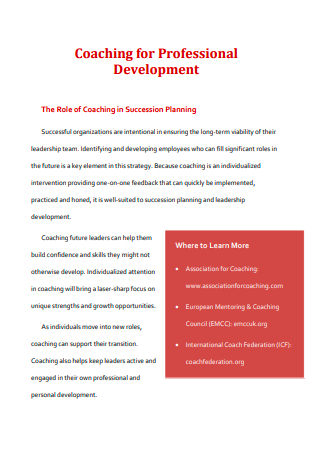
Coaching For Professional Development Plan
download now -
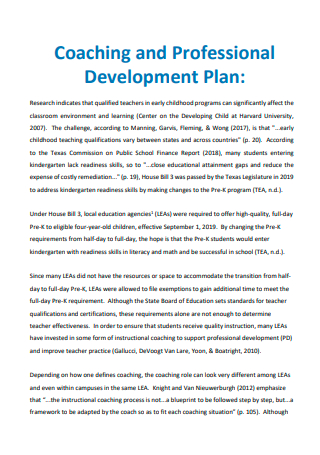
Coaching and Professional Development Plan
download now -
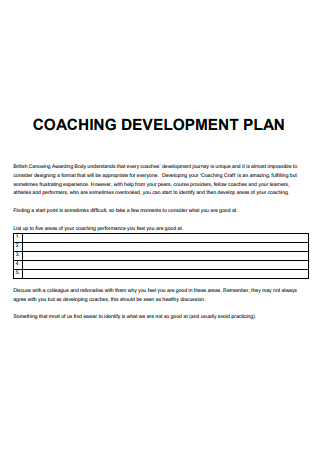
Coaching Development Plan Example
download now -
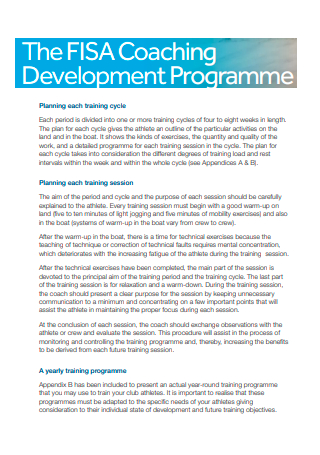
Coaching Development Programme Plan
download now -
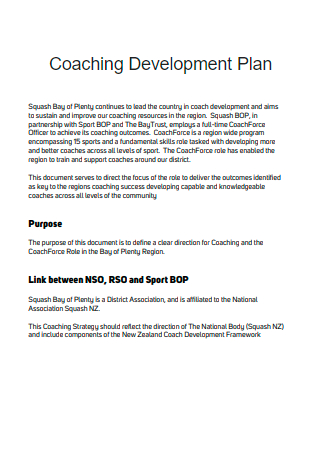
Coaching Development Plan in PDF
download now -
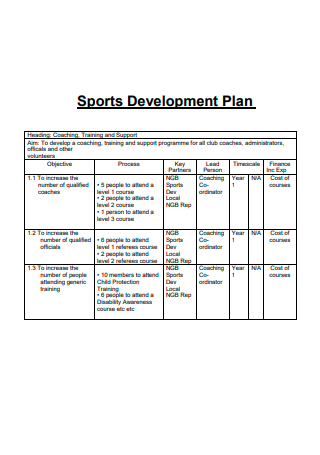
Coaching Sports Development Plan
download now -
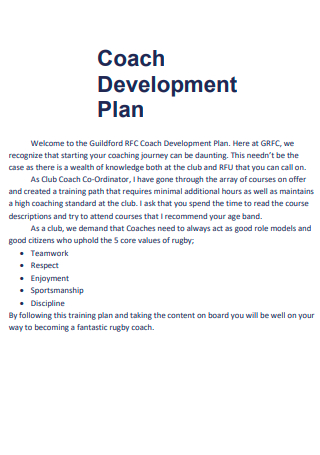
Simple Coach Development Plan
download now -
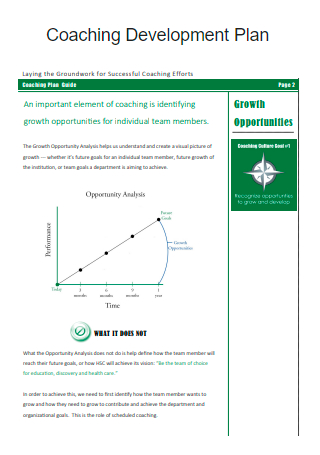
Basic Coaching Development Plan
download now -
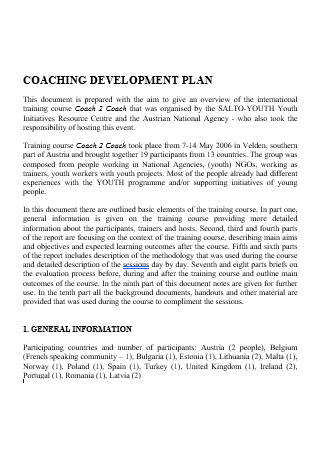
Coaching Development Plan in DOC
download now
What Is a Coaching Development Plan?
A coaching development plan is a technique that an organization uses to train, motivate, and improve the performance of its personnel. You can work with each member of the team to set goals for improving their abilities and productivity. These goals can help them progress in their careers and contribute to the organization’s success. Working closely with employees to set both short- and long-term career goals is normally part of a typical coaching professional development plan. You will then hold regular meetings with them to check on their progress and identify areas where they may improve. An example of a coaching development plan is prepared for additional references.
Why are Coaching Development Plans Important?
Coaching development plans are crucial because they allow employees to receive useful feedback on how to grow in their jobs. Employees may be promoted to higher positions within the company as a result of this, and they may contribute amazing big-picture ideas and plans that benefit the company tremendously. Coaching development plans also allow you, as a manager, to give constructive criticism on an employee’s performance, allowing them to better understand which aspects of their job they need to work on. This motivates employees to remedy any errors they make in their duties and helps put an end to any undesirable work habits.
Core Leadership Coaching Principles
As a coach, there are various methods that you can use to accommodate those who will be receiving your coaching. It is important to be well-versed in the various principles as it will act as a reminder of what you need to keep in mind as you are coaching the employees within a company or organization. If you have been in the industry for quite some time now, you will know that these sets of principles will help you to become an effective coach. Otherwise, if you are new, then read this curated list and apply it to your coaching methods or your performance coaching model.
Different Types of Coaching
You often hear about coaching in the workplace, but you may not be able to precisely define it. It’s a leadership development technique that encourages leaders to state their objectives clearly and to help their direct reports by providing them with room to speak and receive guidance. In truth, coaching has been shown to improve individual performance, but companies are moving away from the typical model. Rather, teams are evaluating a variety of coaching methods to improve responsibility, development, and performance at all levels. Read this curated list to find out the various types of coaching which can help you identify the best method for your task.
How to Write a Coaching Development Plan
Preparing a coaching and mentoring development plan is just as strenuous as executing the coaching process itself. This is why it is important to take your time in planning the contents of the development plan so you won’t have to think of each section at the moment itself but have it readily available before the execution. But you may be pressed for time, so you will need to view the sample coaching development plan as an additional means of reference as you go through this guide on writing the coaching development plan.
Step 1: Determine the Employees’ Abilities
When you are first putting together a coaching strategy, you should figure out what your employees’ strengths are. Identifying which activities to assign them and which abilities to develop further to improve their performance even more by listing the responsibilities or obligations in the employee’s job description will help to recognize what needs to be done throughout the coaching session. You can also highlight these characteristics to your employee to let them know that you are aware of their abilities and encourage them to keep working on them. At the same time, be aware of what needs to be done or improved further.
Step 2: Look For Areas That Need Improvement
Identifying an employee’s strengths makes it easier to recognize potential areas for improvement. Make a list of a few changes to the employee’s role that you believe they could make. Provide examples to help the employee better identify and grasp these issues in their performance while addressing these areas with them. Keep the talk positive by expressing your belief in the employee’s ability to improve and overcome these challenges. As mentioned above, taking notes of the things that lack improvement is just as important as pursuing skills and capabilities that are already built up.
Step 3: Inquire about the Employee’s Performance
Request that the employee does a self-assessment after you have shared your thoughts on their work. This allows you to learn about how your team views themselves as employees and identify any strengths or places for improvement that you may not have seen before. Each coaching session will need thorough feedback on their performance so that you can carefully assess if the coaching method is working on them or if the development is not as successful, then you may need to try out another style.
Step 4: Identify Obstacles to the Employee’s Success
You must first establish whatever barriers or issues the employee is facing that may be preventing them from functioning at their best before defining their goals. Lack of time to focus on specific tasks or projects, limited training or knowledge of how to use specific workplace tools or comprehensive work duties, and little to no tools or available resources to educate themselves on specific projects or complete tasks are all key challenges that may prevent employees from improving their performance.
Step 5: Provide Alternatives to Overcome the Challenge
You can work to overcome the hurdles that are preventing the person from achieving their best after you have identified them. Examine each obstacle in the employee’s path and inquire about how they plan to overcome it, as well as whether they require your aid. Encourage the employee to overcome these difficulties on their own if at all possible, while also letting them know that you’re there to help if they need it.
Step 6: Create Short and Long-Term Objectives
Once no more roadblocks are preventing your employee from working at their best, work together to set milestones and goals for success. Concentrate on the areas where you and the employee can improve, and set short and long-term goals to help them improve their performance. A particular example of this is that if a new employee is having problems understanding and familiarizing themselves with the terminologies of the organization and technical language, a goal would be to read five industry articles per week. This will help the employee and your coaching development plan to see whether or not either the short or long-term goals are achieved.
FAQs
What is coaching in employee development?
To put the words simply, coaching is the process of providing real-time feedback to employees to help them improve their present job performance. It’s a combination of on-the-job feedback and skill development. Observational coaching and formal coaching are the two styles of coaching. Observational coaching is usually conversational and informal. This is where a coaching development plan comes into the picture.
What is the concept of a coaching tool?
Coaching Tools are valuable additions to your coaching toolkit because they increase your confidence while also assisting your clients and employees in growing more quickly. They are motivational worksheets and exercises that assist people in learning more about themselves and making positive changes in their lives. These coaching tools can be utilized as an additional means of helping out employees in need of coaching.
How to coach employees effectively?
Any coaching conversation should begin with a specific goal in mind. The objective of the chat is usually one of three types: developmental, career, or performance. Understanding the assessment is the next phase in any coaching dialogue, and it necessitates the coach asking insightful questions, actively listening, being comfortable with quiet, and viewing the problem from different viewpoints. Leaders may assume they already know what’s going on or believe they have all of the facts. After that, it’s time to give feedback and set goals. Finally, there is the need for follow-up help.
Writing a development plan for coaching will be challenging especially if it is within a company or a different set of employees whose skill sets you are not as accustomed to. Since each company is unique in its own way, you may not have everything thought of from the start. But not to worry because this article did lay out additional points and formed them into a list to better serve you the knowledge you may need to write a sufficient coaching personal development plan.

